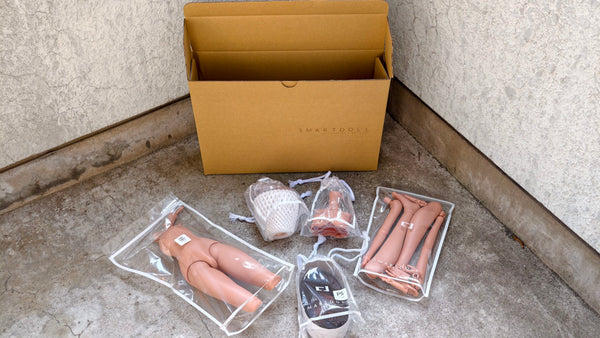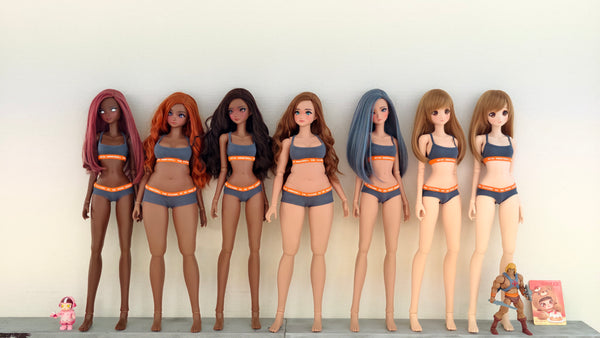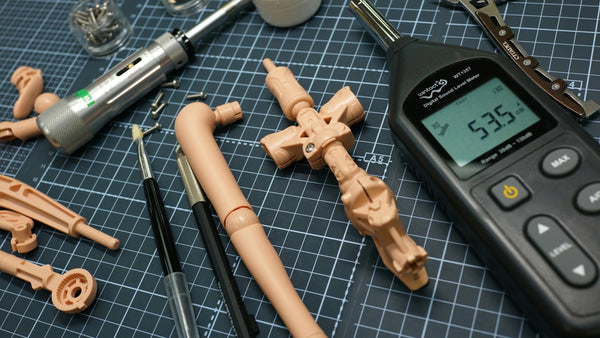Our Option Dye Apparel are pre-printed garments designed to be worn as-is (image 1 above) —or dyed by you for a weathered, one-of-a-kind look (image 2 above).
T-shirts and camisoles have always been great canvases for self-expression through printed designs. Until recently, we used a Roland Versa UV printer to bring our ideas to life. While the output looked good, the process was far from ideal—print failures were common due to ink splashes and fabric shifting during the print cycle, making it difficult to maintain consistency.
We also experimented with silk-screen printing. Despite the amount of effort involved, the method couldn’t support the level of intricacy we wanted in our designs. The physical limitations of the process, combined with its slow production speed, made it too restrictive for the way we work.
In early 2025, we began exploring sublimation printing as an alternative. After several months of development and field testing, we think we’ve found the sweet spot. Sublimation works by turning solid ink into gas, which then bonds with polyester fibers. This process requires a high polyester content—too little, and the print turns out blurry or faded.
When done right, sublimation delivers vibrant, full-color designs that hold up well over time. Because the ink becomes part of the fabric (rather than sitting on top like traditional printing methods), it won’t crack or peel. While some natural fading may occur with frequent washing or prolonged sun exposure, sublimation tends to be more durable and resistant to wear than other methods.
At the same time, I’ve always loved the worn-in, post-apocalyptic look. I wanted folks to be able to dye their own tees at home using something as simple as tea. To make that possible, the fabric needed some cotton content. We settled on a 65% polyester / 35% cotton blend—just enough polyester for crisp sublimation printing, and just enough cotton for effective, natural dyeing.
Of course, I know the weathered wasteland look isn’t everyone’s cuppa tea (ahem), so the shirt/camisoles looks just as good fresh out of the bag—white, clean, and ready to wear.
But for those who want to give it a more sun-faded, lived-in feel, here’s a simple tea-dyeing method you can do at home:
Step 1: Prepare the garment
Soak the T-shirt or camisole in water. Then scrunch, twist, or tie it into a ball and secure it with rubber bands.
Step 2: Make the tea bath (photo 1 above)
Steep 2-3 black tea bags (Tetley, PG Tips, Lipton, etc.) in boiling water—enough to fully submerge the fabric. Let it steep for 10–15 minutes to extract a strong color. Please be careful not to burn yourself or others.
Step 3: Add salt (optional)
You can add 1 tablespoon of salt while the tea is steeping. Salt acts as a mild fixative on natural fibers like cotton. For polyester blends, the effect is limited—but harmless.
Step 4: Submerge the shirt
Place the shirt in the tea bath while it’s still hot (but not boiling). Stir occasionally for an even result—or leave it alone if you want an uneven, more chaotic look (like I do ;-). Let it soak for 30 minutes to an hour depending on how deep you want the color.
Step 5: Rinse and set the color
Once you’re happy with the tone, rinse the garment in cool water. You can also soak it in a saltwater solution (1 tbsp salt in a bowl of warm water) for another 30 minutes to help fix the dye, although again, this has minimal effect on poly blends.
Step 6: Air dry (photo 2 above)
Hang to dry naturally in a shaded area. Once dry, the final color may appear a bit lighter.
Please keep in mind that this method will result in a completely random, worn-in look. You’ll need to embrace whatever comes out of the dye bath. The photo above shows how our T-shirts turned out using this method—and as you can see, no two are the same, with some edges darker than others.
Please note that due to the cotton content in the fabric, you can expect approximately 3% vertical shrinkage after the dyeing process. If a precise fit is important to you, we recommend factoring this in before dyeing.
Tea-dyed garments may retain trace tannins, which can potentially stain lighter vinyl tones like Milk or Tea—especially if the garment is damp, not fully rinsed, or worn in humid conditions. To minimize risk, rinse thoroughly after dyeing, allow the garment to dry completely, and consider using a white bodysuit as a buffer. Natural dyeing methods are inherently unpredictable, so even with precautions, some staining risk remains.
On the other hand, sublimation printing is much safer for Smart Dolls. The process bonds gasified ink directly to polyester fibers on a molecular level, meaning the print becomes part of the fabric itself rather than sitting on top. As a result, sublimated designs won’t crack, peel, or transfer to vinyl—even in heat or humidity.




 While the head and hands will be vinyl - you have a choice of two different types of body - one is referred to as Cortex and the other as Vinyl. Both body types are pre-built.
While the head and hands will be vinyl - you have a choice of two different types of body - one is referred to as Cortex and the other as Vinyl. Both body types are pre-built.

